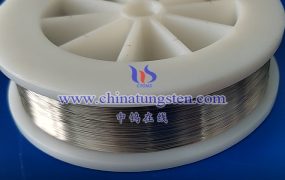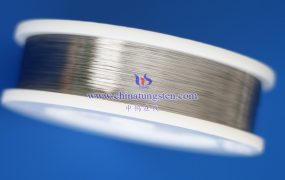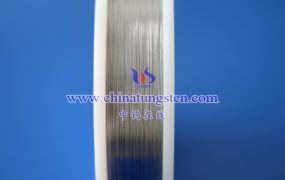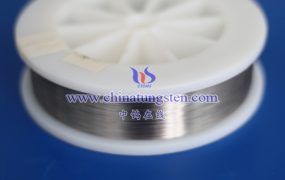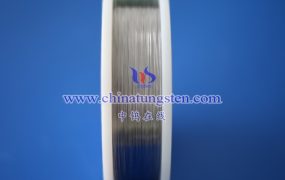The reason for choosing tungsten as the filament material for halogen lamps is mainly because tungsten has the following unique properties, making it very suitable for high-temperature and efficient luminescence applications. We can analyze the advantages of tungsten as a filament for halogen lamps in detail from the following aspects:
- High melting point
Tungsten has the highest melting point of all metals, about 3422°C. The tungsten wire of a halogen lamp needs to reach a high temperature of 2500°C–3000°C when working. Ordinary metals cannot withstand such high temperatures, but tungsten can work stably at such extreme temperatures, avoiding filament failure due to melting or softening.
- High temperature strength and stability
Tungsten maintains extremely high tensile strength and creep resistance at high temperatures. Even in high temperature environments, tungsten wires are not prone to plastic deformation or fracture. Its low thermal expansion coefficient (about 4.5×10⁻⁶ /K) makes the dimensional change of tungsten very small at high temperatures, reducing the risk of damage to the filament due to thermal stress.
Creep resistance: At high temperatures, the structure of tungsten is very stable, can withstand long-term thermal cycles, and is not easy to deform or degrade.
- Good electrical and thermal conductivity
Tungsten has good electrical and thermal conductivity. It has a low resistivity and can effectively conduct current. At the same time, due to its excellent thermal conductivity, it can quickly dissipate the generated heat, thereby preventing damage caused by local overheating of the tungsten wire or accelerating tungsten evaporation.
Efficient heating: Since tungsten can maintain a high electrical conductivity at high temperatures, it can efficiently convert electrical energy into thermal energy to make the bulb glow.

- Antioxidation
Tungsten has strong antioxidation. Although there is a certain amount of oxygen in the working environment of the halogen lamp, a layer of tungsten oxide (WO₃) can be formed on the surface of tungsten to prevent further oxidation. This allows tungsten to maintain good surface stability at high temperatures and extend the service life of the filament.
- Excellent evaporation characteristics
In a halogen lamp, the tungsten wire will slowly evaporate as the temperature rises, and the evaporated tungsten atoms will be redeposited on the surface of the tungsten wire through the halogen cycle. Tungsten has a moderate evaporation rate, which is particularly important in halogen lamps because it can react with halogen gas to form volatile compounds (such as WBr₆ or WI₆), which are redeposited back in the cold area of the bulb, avoiding a large amount of evaporation and deposition of the tungsten wire surface on the lamp wall, thereby effectively extending the life of the bulb.
Halogen cycle: This process of evaporation and redeposition allows halogen lamps to have a longer service life than traditional incandescent lamps and maintain efficient brightness output.
- Excellent mechanical properties and fatigue resistance
Tungsten wires have extremely high fatigue resistance and vibration resistance. During the operation of halogen lamps, the bulbs will experience drastic changes in temperature and mechanical vibrations, and tungsten wires can withstand such frequent thermal expansion and cold contraction, and are not prone to breakage or failure.
- Good surface smoothness
The smooth surface of tungsten wires helps to reduce light scattering and improve light efficiency. In halogen lamps, the surface of tungsten wires does not quickly accumulate dust or smoke, but effectively maintains its surface cleanness through the halogen cycle to ensure high brightness output.
- Controllability and processability
Although tungsten is a very hard and high-melting material, it has a certain degree of processability. Modern technology has made the manufacturing process of tungsten wire very sophisticated, and can accurately control the size and shape of tungsten wire according to different bulb requirements (e.g., fineness, spiral shape, etc.) to ensure the performance requirements of the bulb.
- Environmental friendliness
Compared with some metal materials that may release harmful substances due to high temperature or long-term use, tungsten has a relatively low environmental impact. Tungsten does not produce high toxic emissions like tantalum or molybdenum, which meets environmental protection requirements.
- Long life and high efficiency
One of the most important advantages of tungsten as a filament material is its high durability and long life. Through the halogen cycle, tungsten can avoid the volatilization, deposition, and blackening of the bulb wall common in traditional bulbs, thereby providing a longer working life and more stable light effect.
More details of tungsten wires, please visit website: http://tungsten.com.cn/tungsten-wires.html
Please contact CHINATUNGSTEN for inquiry and order of tungsten needles:
Email: sales@chinatungsten.com
Tel.: +86 592 5129595

